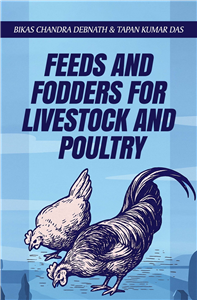Pre and Probiotics for Poultry Gut Health
by Helen Masey O'Neill, Emily Burton, Dawn Scholey
Poultry are the most widely used animal protein source in the world: billions of meat birds are produced globally each year, using 360 million tonnes of feed. Within Europe, over 30,000 companies involved in the production of poultry create an annual turnover of €107 billion. However, maintaining the sustainability of the industry as it moves towards antibiotic-free production is one of the key challenges. Starting with an overview of antibiotics as growth promoters and the challenges faced as the industry moves away from their use, this book then thoroughly considers the potential of pre and probiotic additives in poultry gut health. The book: - Includes thorough definitions of additives in the pre and probiotic space and examples of how they work; - Addresses how to test pre and probiotics and other similar additives, and how they interact with other products, with learning from both poultry and allied sectors; - Combines authors from both academic and industry backgrounds on all chapters, to ensure coverage is balanced, robust and commercially relevant. Based on the renowned World Poultry Science Association UK Branch Poultry Science Symposium 2022, this book provides a thorough and valuable contribution to the field for all involved with the nutrition and production of poultry.



























